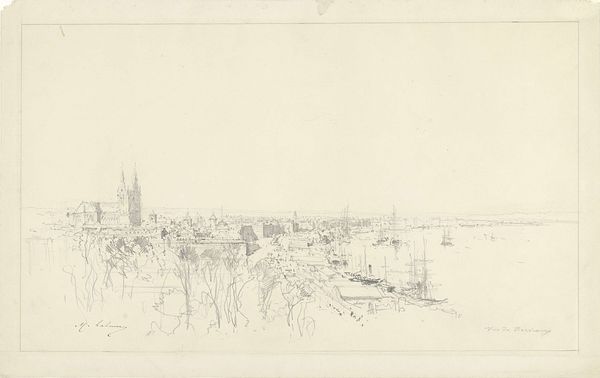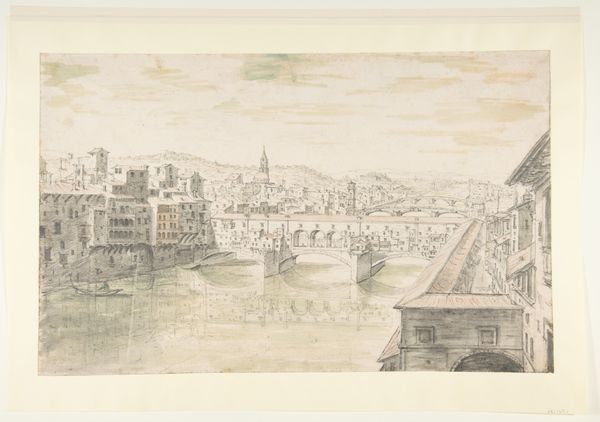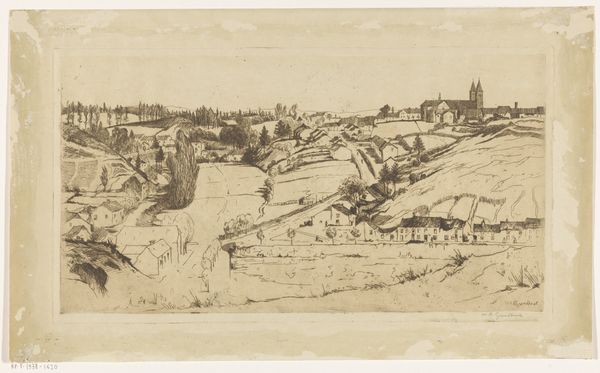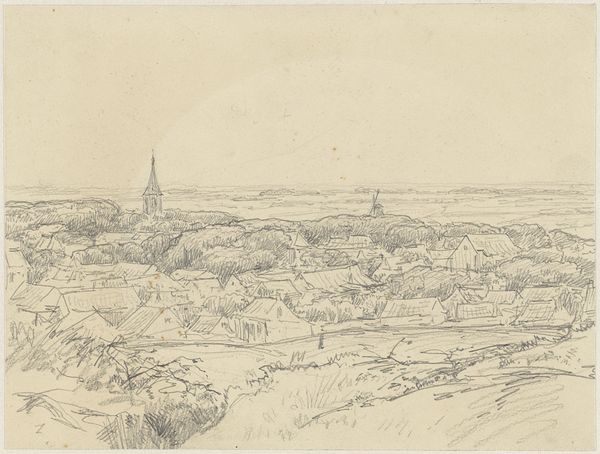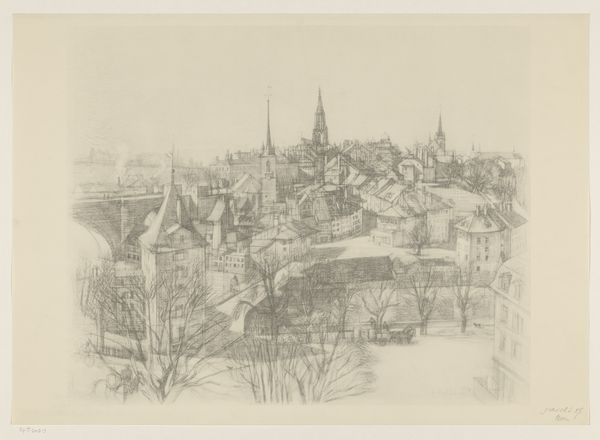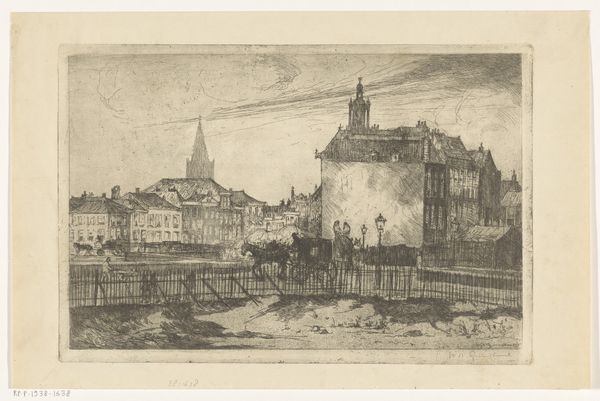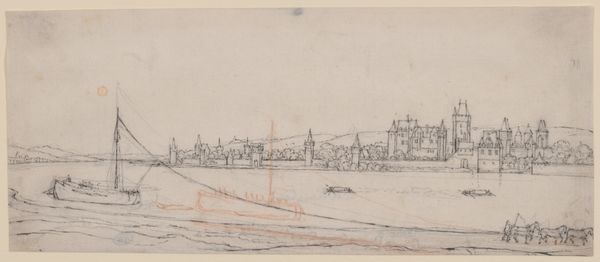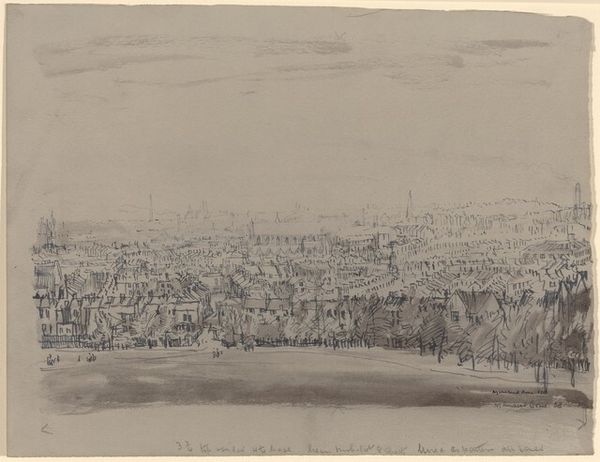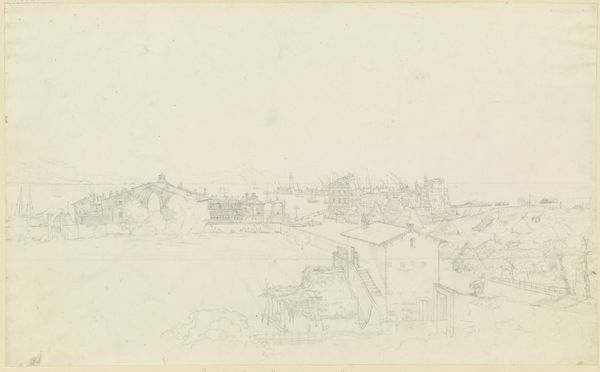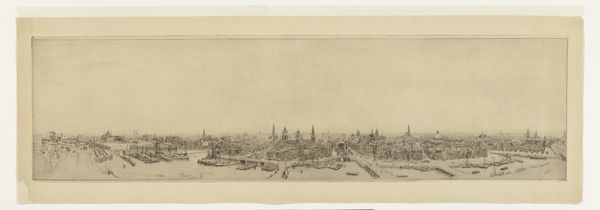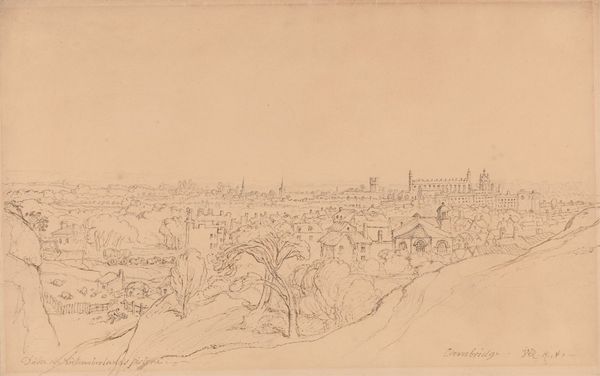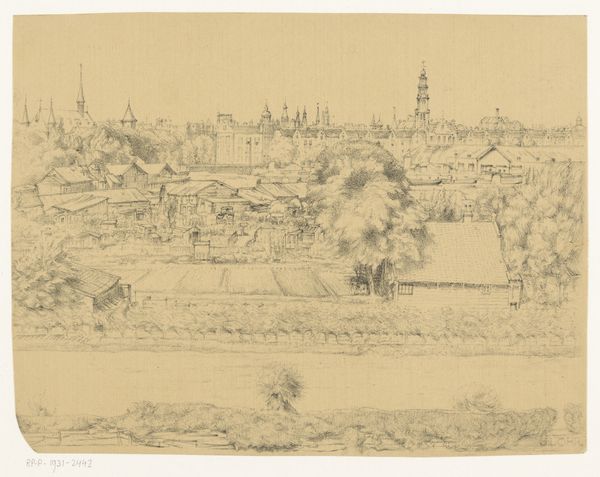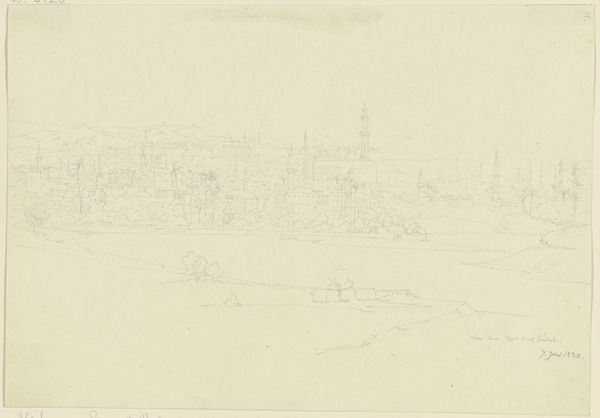
drawing, pencil, graphite
#
drawing
#
pen sketch
#
pencil sketch
#
landscape
#
etching
#
ink drawing experimentation
#
pencil
#
graphite
#
cityscape
#
realism
Dimensions: height 500 mm, width 699 mm
Copyright: Rijks Museum: Open Domain
Editor: Here we have "Gezicht op Bern," a graphite and pencil drawing by Max von Mühlenen, created in 1955. It's quite detailed, almost photographic in its realism, but the monochrome palette lends a certain wistful quality. What do you see in this piece, especially considering the socio-political context of the time? Curator: The cityscape, particularly rendered with such meticulous detail using pencil and graphite, evokes a sense of stability and continuity. In the mid-1950s, after the devastation of World War II, images of thriving cities served a powerful symbolic function. They represented recovery, order, and the enduring spirit of European culture. Does the absence of visible human figures strike you at all? Editor: It does now that you mention it. The city seems almost deserted, which amplifies that wistful quality I initially noticed. Curator: Exactly. That absence might subtly comment on the human cost of the war, a quiet acknowledgement within an otherwise reassuring image of urban life. Think about how the artist chooses to depict Bern specifically. Why not a more damaged, war-torn city? Editor: Perhaps because Bern, being in Switzerland, remained neutral and relatively untouched. Depicting it becomes a statement of resilience without directly referencing the trauma. It presents an idealized vision of what other cities could aspire to. Curator: Precisely. And the artistic choice of rendering it in pencil and graphite, materials associated with sketching and preliminary studies, adds another layer. It suggests a process of careful reconstruction, not just of the city itself, but of collective memory and national identity. This piece subtly reinforces a particular narrative. What is your final thought about this landscape drawing? Editor: I now appreciate how much a seemingly straightforward cityscape can communicate about historical context and societal values. Curator: Indeed. It’s a potent reminder that art always exists within a network of cultural and political forces.
Comments
No comments
Be the first to comment and join the conversation on the ultimate creative platform.
